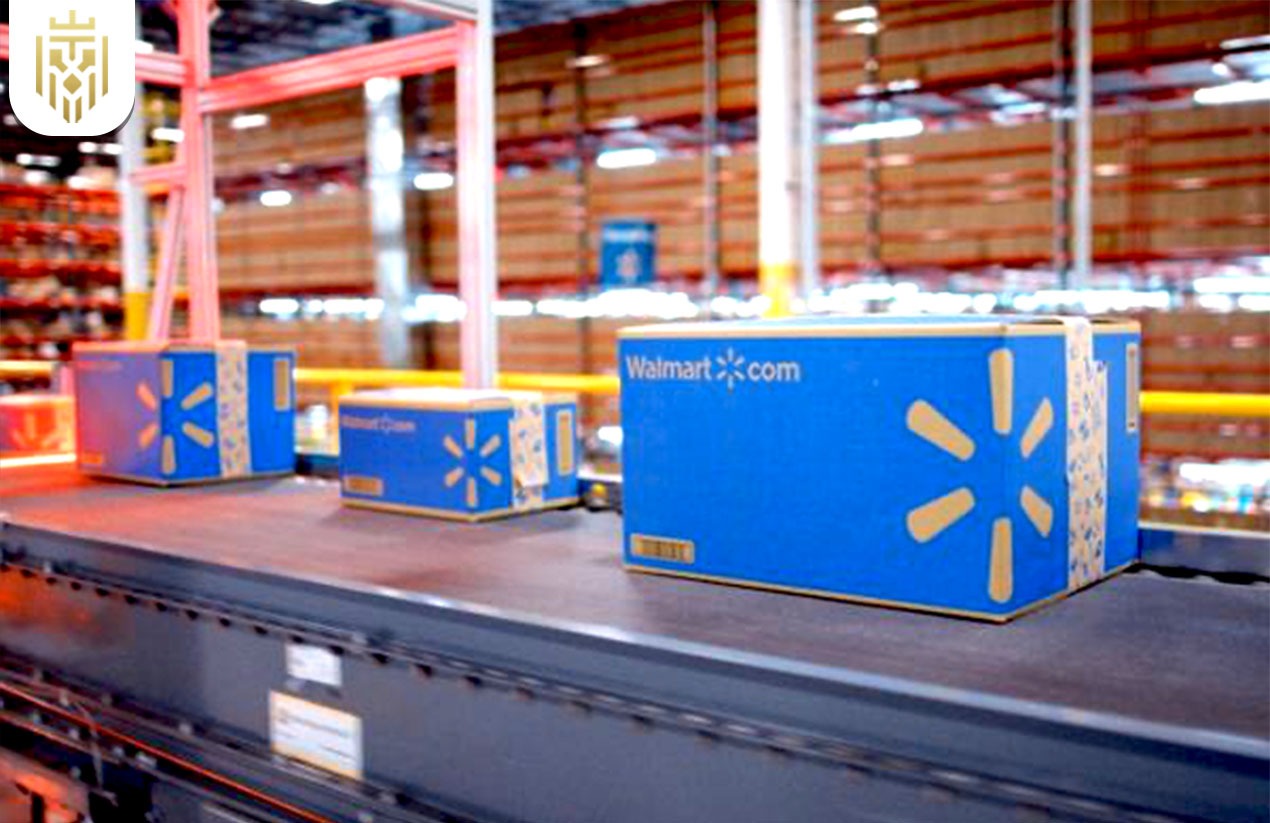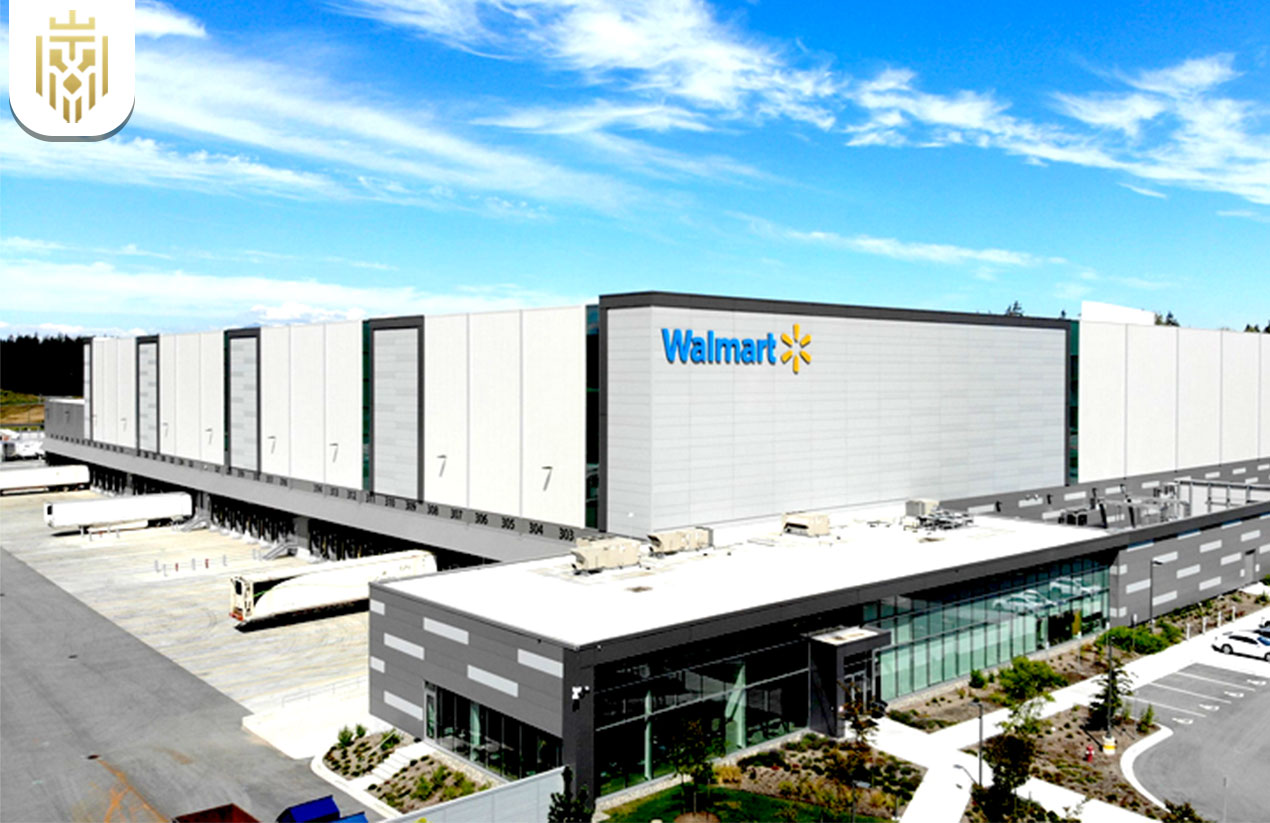How Walmart is Leading the Way for Sustainable Warehousing.
Walmart is changing how it operates. It plans to cut its environmental impact. The company will use energy-efficient technologies in its warehouses. Walmart has about 150 advanced distribution centres worldwide. They use renewable energy, smart tech, hydrogen-powered forklifts, and smart logistics management. By 2023, 36% of its operations run on renewable energy, with over 9,500 hydrogen forklifts in use. Since 2010, energy use per square foot has dropped by more than 12%. Walmart is leading the way in green warehousing for retail and logistics.
Energy-efficient Green warehouses in reducing environmental Impact
Walmart’s commitment to environmental sustainability is evident in its comprehensive energy strategies and innovative warehouse designs.
-
Reducing Energy Consumption at a Massive Scale
Walmart has set specific energy retrofit programs in warehouses, specific in certain major sites around 32% closing energy consumption. Interestingly, since 2010, Walmart registered energy reductions of more than 12% per unit floor area, demonstrating an efficient scale of operation in its distribution without wasting energy. Examples of these enhancements include LED smart lighting, high-efficiency cooling systems, and AI-driven energy optimization tools that adjust power usage in real time.
-
Walmart’s Multi-Faceted Energy Strategy
The company has initiated about 550 renewable energy projects in different countries in the world; roughly 1 gigawatt comes into play with these projects, much sufficient to power millions of square feet of warehouse space. As of 2023, Walmart has achieved 36% of its total energy consumption with renewable energy, with a promise made to become 100% renewable by 2035. Besides, it is entering into long-term power purchase agreements for wind and solar ensuring continued transformation to fossil fuel-less dependency energies.
Key Features of Walmart’s Green Warehouse
Walmart’s green warehouses have key features that boost sustainability and efficiency.
-
Renewable Energy Integration
Walmart has put solar panels on warehouse roofs. They produce millions of kilowatt-hours of clean electricity every year.
Contracts for wind energy have been signed to add low-carbon options to grid power.
-
Hydrogen Powered Forklift and Equipment
Walmart has switched its forklift fleet to hydrogen fuel cell power since 2012. In total, Walmart has more than 9,500 of these hydrogen fuel cell-powered machines. Unlike battery-operated forklifts, these machines can be refuelled in under three minutes. Battery-operated models take much longer to recharge. Walmart has cut its reliance on fossil fuels. Now, it uses over 20 tons of liquid green hydrogen each day. This hydrogen comes from Plug Power.

-
Smart Lighting & Energy Management
Walmart has set up energy-saving LED lights in its warehouses. This change cuts energy use by over 12 percent per square foot. AI-driven energy management systems change warehouse lighting, cooling, and heating based on current needs. This helps to reduce waste.
-
Water & Waste Management
Walmart’s zero-waste program stops cardboard, plastics, and organic waste from going to landfills.
They are either recycled, composted, or repurposed for an alternative use. AI inventory systems help avoid overstocking and spoilage of foods. This way, the company reduces waste.
-
Sustainable Building Design
Walmart’s warehouses are built of materials with high energy efficiency, superior insulation, and low-emission HVAC systems, thus yielding an overall reduced energy intensity.
-
AI-Driven Automation
Walmart automates the entire operation of its warehouse and uses AI and robotics systems to track the inventory, process orders, and balance energy optimization. Automated storage and retrieval systems (ASRS) reduce energy use while improving fulfilment speeds. This increases the overall energy efficiency across distribution centres.
How Hydrogen is Supercharging Walmart’s Green Warehouses?
The adoption of hydrogen fuel technology has significantly enhanced the efficiency and sustainability of Walmart’s warehouse operations.
-
Fast Refuelling for Non-Stop Operations
This hydrogen-powered forklift can refuel in under three minutes so that downtime is minimised and operational efficiency is kept at high levels. With this rapid refuelling process, productivity in warehouse operations is ensured to be continuous.
-
Sustainability That Drives Business Value
By integrating green hydrogen infrastructure, Walmart has significantly cut greenhouse gas emissions from its warehouse operations. In collaboration with Plug Power, Walmart receives 20+ tons of liquid green hydrogen daily, driving both sustainability and cost efficiency in logistics.

The Evolution of Forklift Technology
From Conventional to Hydrogen-Powered Forklifts, Walmart is leading the way in sustainable energy.
-
The Problem with Traditional Forklifts
Sometimes, traditional battery-operated forklifts take a long time to charge. This slows down warehouse work. Also, constantly changing batteries raises labor costs and causes delays.
-
Battery-Powered Forklifts
BA Step Towards Sustainability Battery-operated lift trucks lower emissions compared to diesel ones. However, they have downsides like long charging times and high maintenance costs.
In fact, with the shift to hydrogen, Walmart had a better solution involving faster refuelling and no emissions.
Walmart’s Energy Leadership in Retail & Logistics
Walmart has redefined sustainable warehousing by implementing large-scale renewable energy projects, integrating hydrogen-powered equipment, automating operations with AI, and drastically reducing waste across its distribution centres. As of 2023, Walmart powers 36% of its facilities with renewable energy, operates over 9,500 hydrogen fuel cell forklifts, and has reduced energy consumption per square foot by over 12% since 2010. These real-world implementations prove that sustainability is not just an aspiration but a fully integrated business strategy. With rapid progress toward running on 100% renewable energy by 2035 and achieving zero emissions by 2040, Walmart is setting the gold standard for green logistics and reshaping the future of warehousing.
FAQs
1. What makes Walmart’s warehouse energy-efficient?
The company builds warehouses which have sustainability at its core suggestive of solar and wind energy, artificial intelligence powered energy management systems and LED smart-lighting all of which would contribute towards reduced levels of electricity consumption. Other innovations in the warehouse include hydrogen-powered forklifts and automated storage solutions, which will cut down on fossil fuel consumption as they increase efficiencies. Subsequently, such green initiatives place Walmart in a better position to reduce its carbon footprint while streamlining its warehouse operations.
2 . How does Walmart minimize waste in its warehouses?
Walmart subscribes to a zero-waste stance where materials such as cardboard, plastic, and food wastes will be recycled, repurposed, or composted instead of being sent to landfills. AI-derived inventory management is also instrumental in applying science towards reducing of ‘fun stocks’ and food wastes by ensuring proper storage and distribution. Also, smart packaging solutions and water-conserving systems make a huge difference in total waste produced in warehouses.
3. How does Walmart use hydrogen-powered forklifts in its warehouses?
More than 9500 hydrogen-fueled forklifts are gaining ground in distribution centres as the company continues to replace conventional battery-fueled forklifts for efficiency and reduced downtime. They take only a few minutes to refuel compared with conventional forklifts that may take hours in recharging, making these operations smooth for warehouse work. Unlike standard diesel or lead-acid battery forklifts, these are emission-free.
4. How Hydrogen is Supercharging Walmart’s Green Warehouses?
Hydrogen fuel technology is changing the game at Walmart’s warehouses by reducing the whiteness from efficient and rapid refuelling compared with traditional power sources. This continuous workflow is ensured by hydrogen-powered forklifts and equipment that allow operations to run further without the need for battery swapping or waiting for charging, resulting in productivity while tackling some environmental impact. As Walmart invests in hydrogen infrastructure, it is taking a giant leap toward its dream of zero emissions and a greener supply chain.








